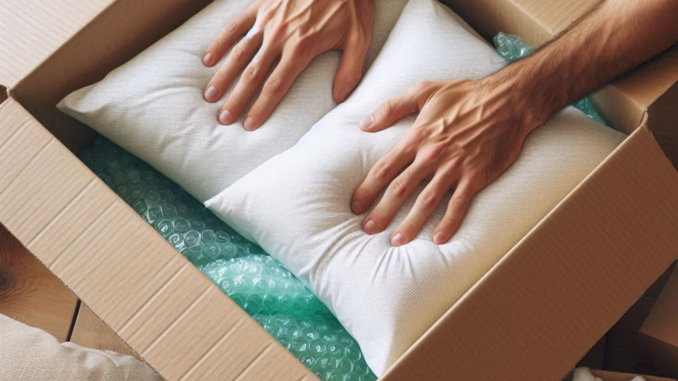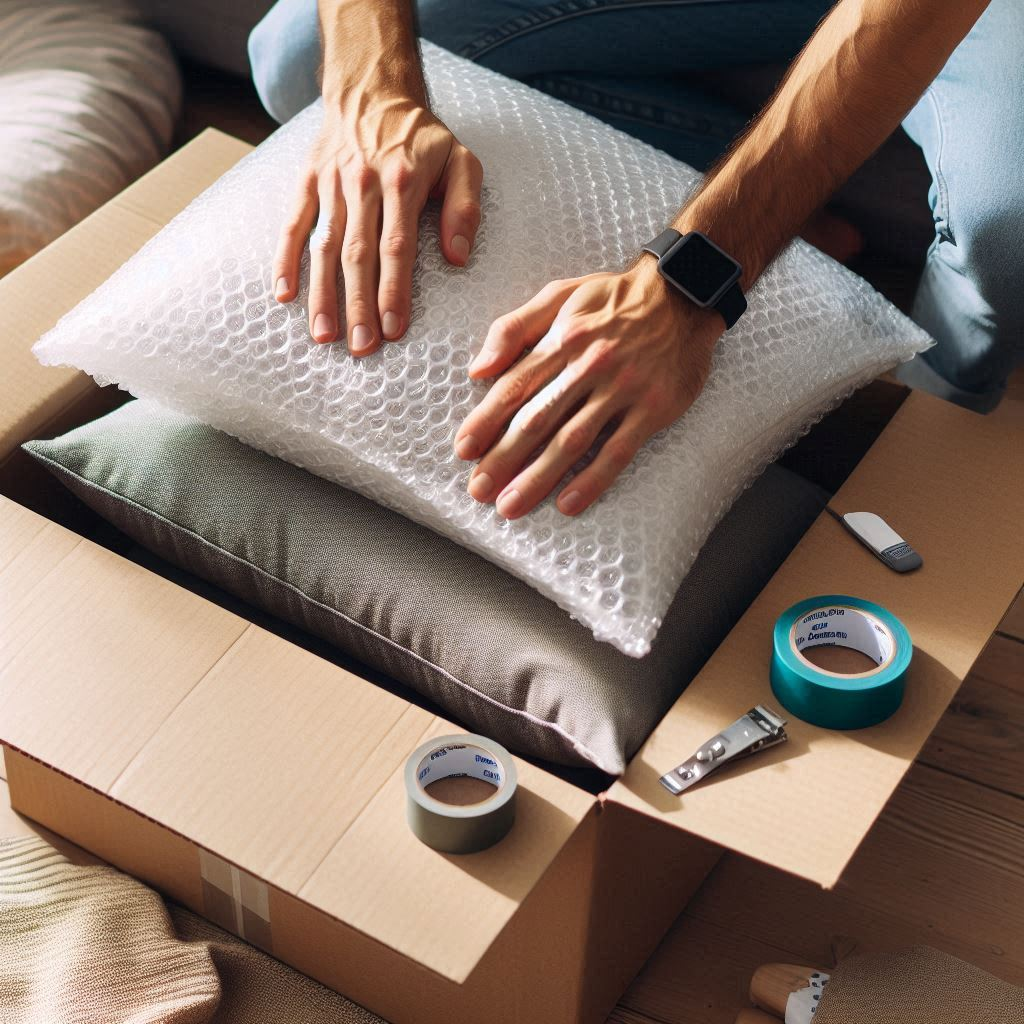
How to Pack Pillows for Moving
Moving to a new home can be exciting, but it also comes with its fair share of challenges. One task that often gets overlooked is packing pillows. While it might seem simple, there’s more to it than just tossing them in a box. This guide will walk you through the process of packing your pillows properly, ensuring they arrive at your new home clean, fresh, and ready for use.
Quick Answer
To pack pillows for moving, first clean them, then place them in plastic or vacuum-seal bags. Pack them in large boxes, filling gaps with soft items. Label the boxes clearly and avoid overpacking.
My Pillow-Packing Adventure
Last summer, I moved from bustling New York City to a quiet suburb in New Jersey. As I packed up my apartment, I didn’t think much about my pillows – until I realized I had quite a collection! From my treasured memory foam pillow to the decorative throw pillows on my couch, I had more than I thought. That’s when I learned the importance of packing pillows properly.
I made the mistake of stuffing all my pillows into trash bags and cramming them into boxes. When I unpacked at my new place, I was disappointed to find some pillows were misshapen, and others had picked up a musty smell from being packed while slightly damp. It was a wake-up call that taught me the value of taking a little extra time to pack pillows the right way.
Why Proper Pillow Packing Matters
You might wonder why it’s so important to pack pillows carefully. After all, they’re soft and don’t seem fragile like dishes or electronics. However, there are several reasons to give your pillows some extra attention during a move:
- Hygiene: Pillows can collect dust, dirt, and moisture during a move if not protected properly.
- Shape retention: Improper packing can lead to misshapen pillows, especially for memory foam or other specialty types.
- Space efficiency: Well-packed pillows take up less space in your moving truck.
- Comfort on arrival: When you reach your new home, you’ll want clean, fresh pillows ready for your first night’s sleep.
Step-by-Step Guide to Packing Pillows

1. Gather Your Supplies
Before you start packing, make sure you have all the necessary supplies on hand. This will make the process smoother and more efficient. You’ll need:
- Large moving boxes
- Plastic bags or vacuum-seal bags
- Packing tape
- Marker for labeling
- Old sheets of packing paper
- Fabric freshener spray (optional)
2. Clean and Prepare Your Pillows
Start with clean pillows to ensure you’re not packing away any dirt or odors. Here’s how to prepare your pillows:
- Check the care labels on your pillows for cleaning instructions.
- Wash and dry pillows according to the manufacturer’s guidelines.
- For pillows that can’t be machine washed, consider dry cleaning or spot cleaning.
- Make sure all pillows are completely dry before packing to prevent mold and mildew.
- If desired, lightly spray pillows with a fabric freshener for extra freshness.
3. Use Plastic or Vacuum-Seal Bags
Protecting your pillows from dirt, dust, and moisture is crucial. Here’s how to use protective bags effectively:
- Place each pillow in a plastic bag, squeezing out as much air as possible before sealing.
- For even better protection and space-saving, use vacuum-seal bags:
- Place the pillow in the bag
- Use a vacuum cleaner to remove all the air
- Seal the bag tightly
- Vacuum-sealed pillows can be reduced to about a third of their original size, saving valuable space in your moving boxes.
4. Choose the Right Box
Selecting the appropriate box is key to keeping your pillows safe and undamaged during the move. Here are some tips:
- Use large boxes specifically designed for bedding if possible.
- If bedding boxes aren’t available, choose sturdy moving boxes large enough to fit your pillows without excessive compression.
- Avoid using old or weak boxes that might collapse under the weight of multiple pillows.
- Consider wardrobe boxes for hanging pillows if you have decorative or oddly shaped ones.
5. Pack the Pillows
Now it’s time to pack your pillows into the boxes. Follow these steps for the best results:
- Line the bottom of the box with old sheets or packing paper for extra cushioning.
- If using vacuum-seal bags, you can pack more pillows per box. If not, be careful not to overstuff.
- Place the bagged pillows inside, arranging them so they fit snugly but aren’t overly compressed.
- Fill any gaps with more old sheets, packing paper, or small, soft items like stuffed animals or hand towels.
- Avoid mixing pillows with heavy or sharp objects that could damage them.
6. Seal and Label the Box
Proper sealing and labeling are crucial for easy unpacking and pillow protection:
- Seal all seams of the box with strong packing tape.
- Label the box clearly with:
- Contents (e.g., “Pillows”)
- Room destination (e.g., “Master Bedroom”)
- Any special handling instructions (e.g., “Do Not Crush”)
- Consider using colored labels or markers to color-code boxes for different rooms.
Special Considerations for Different Pillow Types
Not all pillows are created equal, and some require special care when packing:
Memory Foam Pillows
- Avoid folding or compressing memory foam pillows for long periods.
- Use a box large enough to lay them flat if possible.
- If using vacuum-seal bags, release the air as soon as you arrive at your new home.
Down or Feather Pillows
- These can be safely compressed in vacuum-seal bags.
- Fluff them well after unpacking to restore their shape.
Decorative or Antique Pillows
- Wrap individually in acid-free tissue paper before bagging.
- Consider using small boxes for each pillow to prevent crushing.
Additional Tips for a Smooth Move
1. Don’t Overpack the Box
While it’s tempting to stuff as many pillows as possible into one box, this can lead to damage and make the box too heavy to carry safely. Stick to a reasonable weight and size for each box.
2. Consider Climate Control
If you’re moving during extreme weather, try to keep your pillow boxes in climate-controlled areas. High humidity can lead to mildew, while extreme cold might affect the texture of some pillow types, especially memory foam.
3. Use Pillows as Padding
If you’re short on packing materials, pillows can double as padding for other items. Just be sure not to use them to cushion anything too heavy or sharp that might damage the pillows.
4. Pack an “Open First” Box
Include a couple of pillows in an “Open First” box along with other bedding essentials. This ensures you have what you need for a good night’s sleep on your first night in your new home.
5. Consider Professional Help
If you have a lot of specialty pillows or are worried about packing them correctly, consider hiring professional movers. They have experience handling all types of household items, including pillows.
Unpacking Your Pillows
Once you’ve arrived at your new home, it’s important to unpack your pillows properly:
- Open the boxes in the rooms where the pillows belong to minimize carrying and potential damage.
- Remove pillows from their plastic or vacuum-seal bags.
- If pillows were vacuum-sealed, allow them to “breathe” and regain their shape for a few hours before using.
- Fluff each pillow to restore its shape and freshness.
- If pillows smell musty, air them outside on a sunny day or use a fabric freshener spray.
Conclusion
Packing pillows for a move might seem like a small task, but doing it right can make a big difference in your comfort and the condition of your pillows when you arrive at your new home. By following these steps and tips, you can ensure that your pillows stay clean, fresh, and in good shape throughout the moving process.
Remember, a little extra care now means you’ll have comfortable, familiar pillows ready for your first night in your new place. And after a long day of moving, you’ll be glad you took the time to pack your pillows properly!
Next Steps
Now that you know how to pack your pillows like a pro, it’s time to tackle the rest of your bedroom items. Consider applying these same principles of cleaning, protecting, and careful packing to your blankets, comforters, and mattresses. With a little planning and attention to detail, you’ll be well on your way to a smooth and successful move. Happy packing!


Leave a Reply